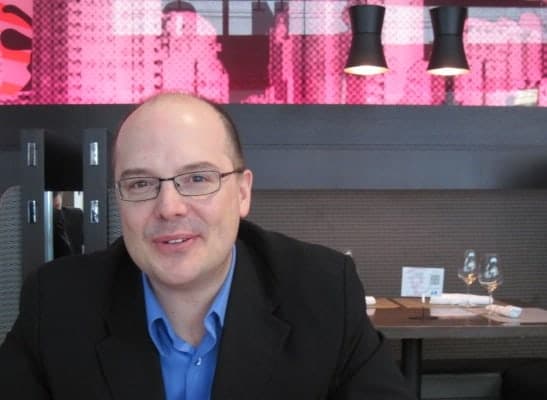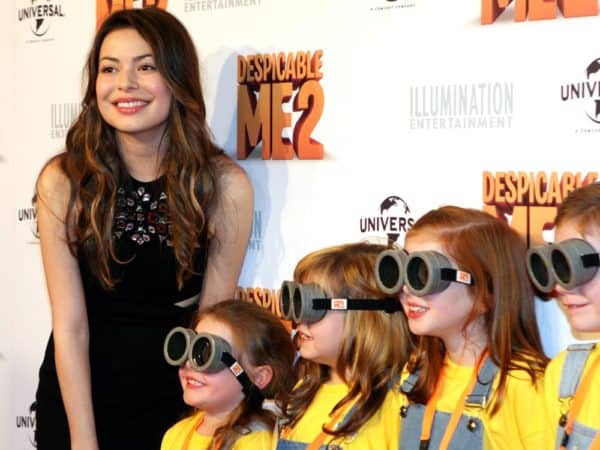
It’s Wednesday at 10am. Is 3D in or out fashion right now? Many techs (the cleantech space leaps to mind) would be right in asserting that their sub-sectors are cyclical. But none could hope to match the roller-coaster that is the 3D space.
In 2009, right around the time that James Cameron’s Avatar was released, Montreal’s Sensio (TSXV:SIO), which had been in the space for more than a decade, started to catch fire. The stock was one of the best performers on the entire exchange that year, rising from pennies to nearly $4 by Christmas. But then, the inevitable snag, as the whole world didn’t rush out to buy 3D TVs en masse.
Not enough content, they said. The glasses are too bulky. Too expensive. Sensio’s stock served as a sort of sentiment indicator for the 3D sector. And sentiment was bad; 2010 and 2011 were as deflating as 2009 was encouraging.
But in 2012, are things ready to swing back for Sensio? More precisely, is the company’s technology and long term focus on its core business ready to make the cycles of its space immaterial? Cantech Letter’s Nick Waddell sat down with CEO Nicholas Routhier to talk about what the company has planned for the coming year.
Nicholas, since Sensio’s stock took off in 2009 the world seems to have become hyper-aware of the value of patents. Your patents are very wide ranging. Can someone even make a 3D TV without your involvement?
Yes, of course they could . It would be a little presumptuous of us to say otherwise. But that being said, we have a number of patents we are looking to bundle value around and make our solution a no-brainer for the industry. Our 2D switch patent, for instance, means that if you do spatial compression and give the viewer the option to watch in 2D or 3D, then you are infringing on one of our many patents. That is pretty wide ranging in that anyone who uses spatial compression, whether it’s traditional side by side or top to bottom, they will need to use it. But our focus is this: for the past eighteen months we have been in negotiations with major TV manufacturers and we are confident we should be able to reach one or more agreements soon. We have been working on this for a very long time and we’re looking forward to finally reaping the benefits. What Sensio really is working from is a DTS or a Dolby model, developing value-added technology that we can integrate inside products and receive royalties.
What about the other side of your business, doing 3D broadcasts in theatres?
We have been saying for a number of years that broadcast is further down the road. And the reason is you need such a big footprint, such a large number of eyeballs watching to make it sustainable. But there are innovators doing interesting things. ESPN, for instance is a innovator, and they are doing some unbelievable stuff. The commercially viable market for the kind of cutting edge stuff they are doing, however, is in my opinion at least, three to five years away. In the meantime, there is an existing and appealing opportunity in showing live events in theatres, especially for sporting events and concerts. These events become one-offs and you can offer them as pay per view in the consumer market, or you can do it as Video on Demand later on.
____
This story is brought to you Zecotek Photonics (TSXV:ZMS). As of November 16, 2011, Zecotek owned title to or controlled more than 55 patents and applications. Click here to learn more.
________________________________________________________________________________________________________________________
So will you be broadcasting the World Cup, the NBA Finals etc. every year from now on?
Unfortunately, it doesn’t work that way. A lot of events are mainly being done as experiments. It’s not an automatic renewal. However, with the NBA, it was the second year in a row that we had a live event. Unfortunately the chance of going for three in a row was hindered due to the lockout, but that has been our closest thing to a recurring event and we’re hopeful that next year we’ll be able to do it again. The way we see this is that we have to establish some recurring events, and we have two initiatives that are looking good on that front. One is UFC, we have done one and there is going to be one every quarter in the US, and we are in talks to expand that to an international deal. We also have a series of concerts that we have just announced with a company called Sequence in France. They’re a producer that sells to TV stations and broadcasters everywhere. With them we are targeting a series of concerts that should happen once every quarter and be shown in theatres.
What’s the experience like?
It’s fantastic. It’s a crazy experience but it has to be managed right by the theatre chain. So there’s a lot of education around that. At first, people have this sense of decorum when they go into a theatre. But in the best places they make it a big show, a big event and it becomes totally crazy. They get a liquor license and encourage participation. When we showed the the NBA Finals in France it was three o’clock in the morning. Six-hundred seat theatres were 85% full. People were yelling and screaming, having the time of their lives watching basketball that finished at five in the morning.
How many live 3D events do you envision doing a year?
We are targeting one event per quarter. Our ideal lineup would be one a month, with a mix of concerts, sports and other events. If all goes as planned, the UFC should be once a quarter, and we would be looking at also doing a concert every quarter.
What do you think the revenue split will be between that side of the business and the consumer side?
I would say it is about fifty-fifty for now, but it should be moving quickly to something like close to 75-25 in favour of the consumer market. The consumer market is really poised for strong growth. The two complaints about 3D on the consumer side were the content and the active systems with the big bulky expensive glasses. But that is changing now that everyone is switching to passive TVs.
What are passive TVs?
Passive TVs use technology inside the TV rather than using bulky glasses. So you can use those cheaper glasses you might get at a theatre at home. The idea with active TVs is that you tweak it to be able to display 120 very discreet images per second on the screen. But the problem is in the glasses. They’re expensive, they’re bulky, there’s a lot of light. Tons of disadvantages. With passive TVs the cost is in the panel, because you have to put a special filter on the TV. But then the glasses become less of an issue.
Is a lot of your technology focused on these passive TVs?
Actually we’re totally agnostic on the type of display. What we do care about is what’s successful in the marketplace. We need a product that really takes on the consumer market. The fact that we now have these passive TVs makes it compelling for consumer to own a 3D TV. A passive TV has sharper colours, they’re brighter, and there’s no flickering. In my opinion, I would say it is a better experience.
So what about the content problem?
What we are launching this year is the 3D Go service. It’s a transactional VOD service that allows people to download or stream the movie of their choice whenever they want. We believe that, with a combination of passive TVs and VOD, this will be the ultimate 3D experience.
You think there’s a misconception about the uptake of 3D right now.
It’s something that we have seen so many times. We launched our first product in 2003, and it’s always the same thing because 3D is a very compelling experience. When people watch a good 3D experience they fall in love with it and that’s why it keeps coming back. The problems is maintaining or sustaining that offering, in other words, moving beyond a concept and a theory. The initial reaction to 3D was great. But then the hard questions came: “How many titles?” “Who is going to be broadcasting in 3D?’ The double-edge sword that was the release of the movie Avatar was that 3D became such a hot commodity so fast that it created unrealistic expectations and everyone assumed that everything was going to be 3D all of the time on the consumer side. It rapidly became obvious to everyone that it was going to be tougher than expected. Now we see a business approach that is more sound and realistic because the it is geared towards meeting the consumer needs.
But the sales are still there…
The sales are there. That’s the biggest challenge. People thought that every TV sold would be a 3D TV. Now that they aren’t seeing it everywhere they think it’s not picking up. In actual fact, it’s picking up faster than HD did in its beginning. People are now considering a 3D TV as a serious option for their next purchase. Right now, the figures we are given is that 3D represents about 10% of all TVs sold. SONY and Samsung are now saying that 50% of all their models are going to be 3D enabled by the end of this year.
Are TVs going to be hybrids, then?
Yes. And that touches on another misconception; that a 3D TV is only good for 3D. A great 3D TV is also a great 2D TV. You don’t have to choose between the two. Right now, people will watch the news, or Oprah or whatever in 2D. But when you sit down to watch a movie, or a hockey game, or the opening ceremonies of the Olympics, then they can watch in 3D.
What’s your financial position like? Do you have enough cash to take you through to commercialization?
Right now we have about $4 million in the bank. Our burn rate is about $300,000 per month. We feel like with everything we are doing we have enough cash because there should be increasing levels of revenues and we don’t expect to increase our expenses. One of the things I haven’t talked much about is our whole strategy behind chips and SOC’s and I think that is something that people aren’t grasping about Sensio. We’ve made a lot of announcements in the past two years about different chip makers adding Sensio decoding in its functionality list. And we have made deals with, I think, eight chip makers so far and have more coming up. The problem is people don’t realize the value of this. People see that our revenues are minimal, but the primary purpose of integrating inside chips is not to generate large revenues from the SOC’s. Instead, the purpose is to make it easier for manufacturers to integrate the technology and reduce the sales cycle from eighteen months to a month. This is where we expect to generate our targeted revenues.
What’s an example of this?
Look at TCL, which is the largest TV manufacturer in China, we started having serious discussions in October of last year. BY CES in January we were doing demonstrations of TVs with media tech chip that had Sensio integrated, running Sensio high- fi 3D content. That’s how quickly we can turn around now. So with 3D Go we have created the whole ecosystem and now all we need to do is play our cards right. Everyone is watching us and you should see a steady stream of announcements with studios and independent producers, we’re bringing all this as a bundle offering. Now TV manufacturers are watching us and asking which chip they need for this, and they’re selecting chips that have the Sensio integration. Within a short term horizon we could have a sizeable and growing network of TVs supporting the Sensio high-fi technology and the VOD store.
Sensio has been around for thirteen years now. How big a year is 2012 for you?
Since 2008, we have been building the company gradually. This is really the year of our emancipation. Our next step is to finalize deals with the content suppliers for 3D GO, finalize the deals with the manufacturers and launch the service. In my opinion, that timetable is now months, not years. To me, it’s going to be a nice year of rewards for our team. We only have 26 people, but they are 26 unbelievably dedicated people, who are really passionate about doing something meaningful. We are just on the cusp of doing it, and it should be a very important and exciting year for everyone involved with our company.
Disclosure: On Friday, March 2nd and Monday, March 5th, Cantech Letter Editor Nick Waddell purchased 50,000 shares of Sensio.
_________________________________________________________________________________________________________________________
_
Comment
Leave a Reply
You must be logged in to post a comment.





 Share
Share Tweet
Tweet Share
Share




This company will be one of the future leaders in 3D.
Sensio was trading at over $4 a couple years ago when they had zero revenues. Now they have major licensing deals with Samsung and Vizio, a LOI with China’s largest TV maker TCL, ongoing negotiations with 4 other major TV makers, and are launching a major 3D VOD with the support of at least 3 major Hollywood studios this spring. The stock is currently trading under 50 cents! Potential for a 10-bagger here in very short period of time imo.